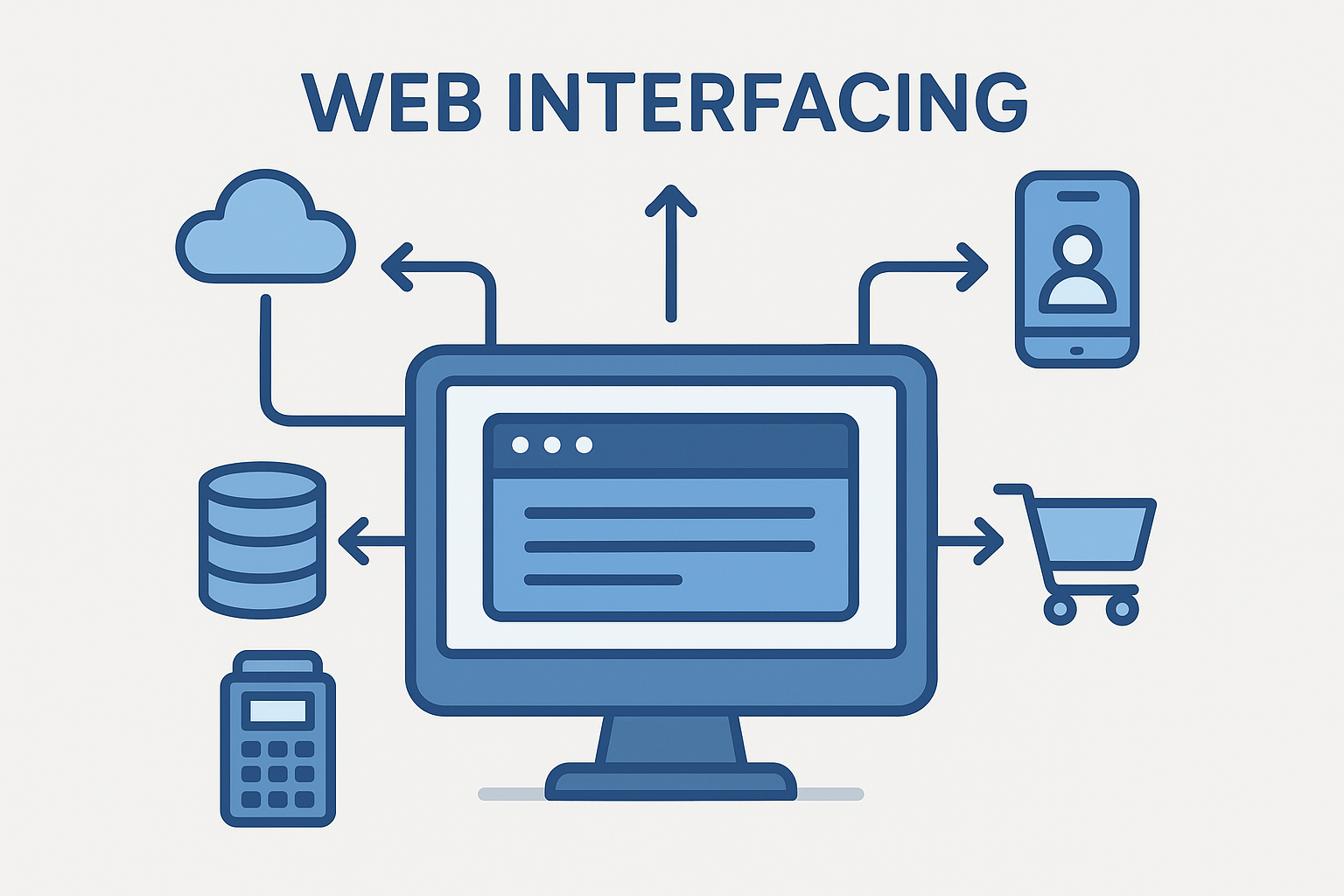In a world where digital has become the default, businesses can no longer rely on isolated systems or fragmented experiences. Customers expect speed, convenience, and personalization across every interaction, and businesses that fail to deliver risk being left behind.
The solution? Web interfacing.
What Is Web Interfacing?
At its core, web interfacing is the practice of connecting different digital platforms, applications, and services through the web. It ensures that systems “talk” to each other, enabling data to flow seamlessly between internal operations and customer-facing platforms.
Think of it as the nervous system of your business: when it works well, information moves freely, processes run smoothly, and customers experience your brand at its best.
Why It Matters for Modern Businesses
- Customer Experience as a Differentiator
Customers no longer compare you only to your direct competitors; they compare you to the best digital experiences they’ve had. Smooth, integrated web interfaces allow for effortless transactions, personalized content, and faster service delivery. - Operational Efficiency
Without web interfacing, teams waste time on manual data entry, duplicate records, and siloed systems. With it, workflows become automated, accurate, and efficient; saving time and reducing costs. - Scalability and Flexibility
Growing businesses need technology that grows with them. Web interfacing makes it easier to plug in new applications, integrate emerging technologies, and expand without starting from scratch. - Competitive Advantage
In fast-moving industries, agility is everything. Companies that can integrate faster, innovate quicker, and launch new services seamlessly will always have the upper hand.
Real-World Applications
- E-commerce: Connecting payment gateways, inventory systems, and logistics platforms for smooth checkout and fulfillment.
- Fintech: Integrating customer portals with secure payment systems, fraud detection tools, and compliance databases.
- Healthcare: Enabling patient portals, telemedicine, and scheduling systems to work in harmony.
The Business Case for Web Interfacing
Research consistently shows that integrated systems improve both customer satisfaction and internal efficiency. Beyond cost savings, businesses with strong interfacing strategies are better positioned to adapt to market shifts and deliver superior customer value.
Conclusion: Turning Technology Into Strategy
Web interfacing is not just about connecting systems; it’s about connecting business goals with customer expectations.
Companies that embrace it are building more than just efficient operations; they’re laying the foundation for long-term growth, stronger customer loyalty, and a true competitive edge.
In the digital-first era, the question is no longer if you should invest in web interfacing. It’s how fast you can make it happen.


